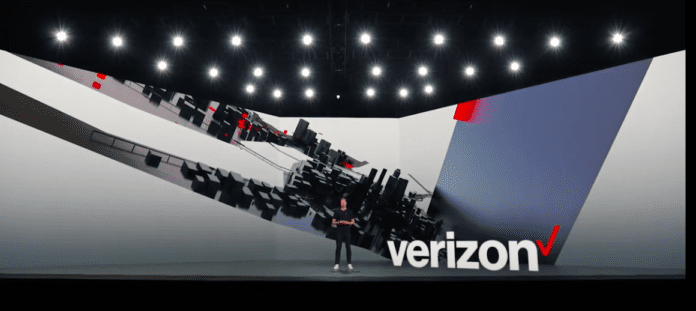Verizon’s CEO Hans Vestberg kicked off this year’s (virtual) CES with a keynote that emphasized not only the numerous applications of 5G technology, but also the power of many of these emerging applications to bring experiences into our homes, a notion that has become more attractive since the start of the COVID-19 pandemic.
One such experience that Vestberg highlighted is the work the carrier has been doing with New York City’s Metropolitan Museum of Art.
“This new experience brings the museum to you,” he said, “using our technology and the advancement in the latest mobile devices to get you closer to the art you love. In fact, we can bring it into your home using augmented reality.”
He added that without 5G, something like this “is just not possible.”
For those more interested in sports than art, the “5G super stadium experience,” which delivers up to seven different live camera angles, as well as augmented reality features, such as the ability to create virtual players overlayed their stats, might be of more interest.
5G’s extremely high bandwith, Vestberg promised, will also transform education, allowing students and educations to do things like explore a virtually rendered Apollo 11 command module inside their living room.
More critically, though, Vestberg announced that over the next few years, the carrier has plans to install 5G in 100 schools around the country in an effort to make sure that every student has access to reliable connectivity.
Additionally, Vestberg, with the help of guest speakers, discussed how 5G will advance robotics and drone delivery, as well as the the value of combining 5G with mobile edge computing (MEC).
But what really stuck out about the keynote was its promise of 5G’s ability to better connect us to our world and to each other, with an underlying suggestion that doing so has become more critical than ever.
“We said 5G would change everything, and then everything changed,” he said. “Let us learn from the past year and let us celebrate a better one to come.”
When introducing each of the above applications, Vestberg was careful to mention the ways in which they will improve the human experience in a meaningful way, whether it was ensuring the safety of firefighters, enhancing online and remote learning or shrinking the digital divide.
Vestberg acknowledged that the pandemic caused the world to “leapfrog five to seven years in the digital revolution,” speeding up the projected timeline to a more remote lifestyle that involves working from home, distant learning and telemedicine, all applications that stand to benefit from 5G’s low latency and high speeds.
“Instead of being our future, it’s our present,” said Vestberg.

